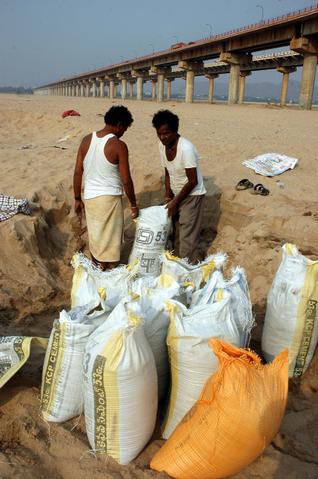 BANGALORE: In 1998, Tharati, a small village in Koratagere taluk of Tumkur district, was the only village in the world cultivating the most water intensive crop — Acorus Calamus (sweet flag or Baje in Kannada, a medicinal rhizome) — which grows in swamp for 10 to 12 months.
BANGALORE: In 1998, Tharati, a small village in Koratagere taluk of Tumkur district, was the only village in the world cultivating the most water intensive crop — Acorus Calamus (sweet flag or Baje in Kannada, a medicinal rhizome) — which grows in swamp for 10 to 12 months.
Of the 46 % of the irrigated area, major chunk of groundwater was for sweet flag, which occupied 56% of irrigated area, followed by paddy (15%).
In 1998, the shallow dug/open wells were the source of irrigation, as the sumptuous sand layer held rainwater and later percolated as groundwater in dug wells.
Illegal sand mining entered the village around 2000. Gradually, with the removal of sand, the dug wells failed, forcing the farmers to drill borewells.
By 2011, things changed drastically. During 2011, of the 190 wells, 50% were borewells and the rest, open wells. Among the borewells, only 50% were functioning, while among dug wells only 9 % were functioning. The cultivation of Baje virtually reduced to zero, and was replaced by low water flower crops — chrysanthemum and buttons. The area under sweet flag which was around 21 acres in 1998, reduced to 0.5 acre in 2011, a reduction of 98%. Similarly, the area under paddy, which was around 39 acres in 1998, reduced to 20 acres, a reduction of around 50%; and the area under groundnut crop was reduced by 90%.
With the rapid reduction in the cultivation area, market price of sweet flag, which was Rs 2,750 per quintal during 1998, has shot up to a whopping Rs 23,000 per quintal in 2013.
These are the findings of the study on sand mining in Karnataka” by a group of experts — Prof MG Chandrakanth and Basavaraj Jamakhandi of department of agricultural economy, UAS, Bangalore; GB Lokesh of UAS, Raichur; and A C Hemalatha and N Nagaraj of ICRISAT, Hyderabad – compared the crop pattern, ground water in 1998 and in 2011 in Tharatti.
The study reveals that there was 53% higher well failure in sand mining area compared with non sand mining area, 28 % reduction in the net returns per acre, 60% increase in the cost of irrigation, 215% higher negative externality per well.
Sand mining is the greatest culprit which has virtually depleted groundwater in many villages of Kolar, Tumkur, Mandya – Shimsha belt. Unless sand mining is checked, agriculture will be ruined,” says the study.
Mere legal solutions will not work, unless farmers are educated and village panchayaths are empowered to take decision on sand mining. Village panchayaths must be empowered to reject / not to issue licenses for sand transport from their villages,” says Prof M G Chandrakanth, chairman, Center of Excellence in Natural Resource and Environmental Economics, UAS .

1 Comment
Useful for research…